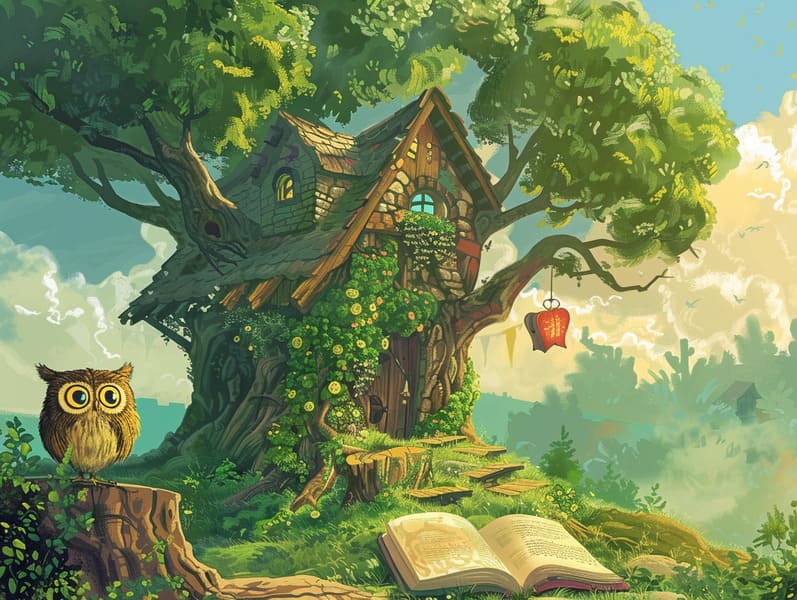The Genesis of Grimm's Fairy Tales with Their Steadfast Splendor.
The Genesis of Grimm's Fairy Tales with Their Steadfast Splendor.
Blog Article

Children's fairy tales have historical significance. These stories have been told from one generation to the next centuries before they were ever written down. They originated from a variety of cultures, including Middle Eastern traditions. They were initially narrated among elders, often carrying themes and messages mirroring the societal norms and beliefs of the time.
The Grimm brothers, Jacob and Wilhelm (the Grimm brothers), were among the first to gather and publish many of these beloved narratives. Their volume, "Grimm's Folk Tales," included tales like "The Story of Cinderella," "The Story of Hansel and Gretel," and "Snow White," which have since become essentials in the world of timeless fairy tales. Similarly, Hans Andersen's delightful stories, such as "The Story of the Little Mermaid," and "The Little Duckling," have touched hearts worldwide, securing their place in the pantheon of classic fairy tales.
Despite their historical roots, fairy tales remain as applicable as ever, especially as nighttime stories for kids. These delightful tales are now available in various formats, including beautifully illustrated books, whimsical animations, and online storybooks.
Their continued relevance can be attributed to several delightful features:
Life Lessons: Traditional fairy tales often convey important moral lessons. Narratives like "The Tale of the Boy Who Cried Wolf" teach the importance of truth, while "The Tortoise and the Hare" demonstrate the benefits of determination and humbleness. These tales offer kids clear distinctions between right and wrong, building their moral compass in a kind yet impactful way.
Warmth and Understanding: Ancient fairy tales frequently showcase personalities facing problems and hurdles, stimulating young listeners to relate with their struggles and celebrate their triumphs. For instance, "The Story of Beauty and the Beast" highlights the merit of seeing beyond looks to realize the inner spirit of a being, fostering perception and awareness.
Cultural Recognition: Many fairy tales are deeply ingrained in the cultural contexts from which they arose. Understanding these fairy tales can provide captivating looks into different traditions, advancing a sense of global understanding and comprehension.
Imagination and Creativity: The imaginative elements in ancient fairy tales—enchanted forests—invigorate children’s creative thoughts. These fairy tales carry readers to enchanted realms, provoking imaginative ideas and a sense of fascination that continues a lifetime.
Old fairy tales are not only mesmerizing but also instructive. They serve as alluring tools in advancing various cognitive and affective skills in young ones. When classic fairy tales are recited, they advance language acquisition by bringing new terms and meanings and complex sentence structures. This practice also nurtures listening skills and focus, as kids focus on every detail, eager to see what happens next.
Furthermore, exploring the themes and characters of timeless fairy tales can cultivate evaluative skills and problem-solving abilities. Young readers are led to find patterns, anticipate outcomes, and realize cause and effect. These deliberations also aid young readers reveal their thoughts and feelings, cultivating their emotional intelligence.
In today’s information age, the abundance of free fairy tales online has made these tales more within reach than ever. Online platforms and software make available wide arrays of Grimm's fairy tales that can be looked at or listened via anytime, anywhere. Fairy tales voiced are particularly well-liked, featuring an engaging way for little ones to engage with these delightful tales. Voice books and read-to-me stories take characters and settings to life, often complemented by fantastical audio effects and instrumentals that intensify the narrative experience.
The persistent attraction of classic fairy tales lies in their ability to evolve to changing times while keeping hold of their main lessons. Contemporary updates of these fairy tales often include more multicultural figures and modern settings, making them relatable to today’s audience. However, the underlying themes of bravery, generosity, and even-handedness remain unchanged, continuing to connect with audiences of all ages.
Traditional fairy tales also offer a sense of ease and knowability. They grant a structured narrative with a evident beginning, middle, and end, often ending with the resolution of conflicts and the triumph of virtue over wickedness. This predictability can be heartening for young readers, distributing a sense of sturdiness in an fluctuating world.
Traditional fairy tales continue to charm and train new generations, maintaining their enchantment and value in modern society. As kids' bedtime tales, they confer upon a perfect blend of enchantment and education, enhancing moral values, empathy, and creativity. The presence of online storybooks and the well-liked nature of fairy tales voiced certify that these ancient narratives remain accessible to new generations.
By perpetuating and broadcasting these fairy tales, we continue to venerate the rich tapestry of folklore and cultural heritage. Whether you are accessing a richly illustrated book, accessing a internet library, or listening on an sound book, the charm of famous fairy tales is always within reach. These stories teach us of the unending spell of tales and its ability to connect us across eras and regions.
Whether you are experiencing a website artistically illustrated book, exploring a internet library, or listening to an audio story, the majesty of traditional fairy tales is always within reach.
These stories remind us of the unfading essence of narratives and its ability to join us across time and space, forging a link that captivates and teaches alike.